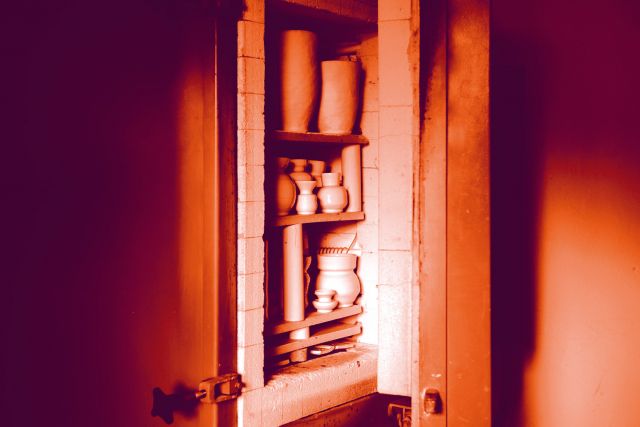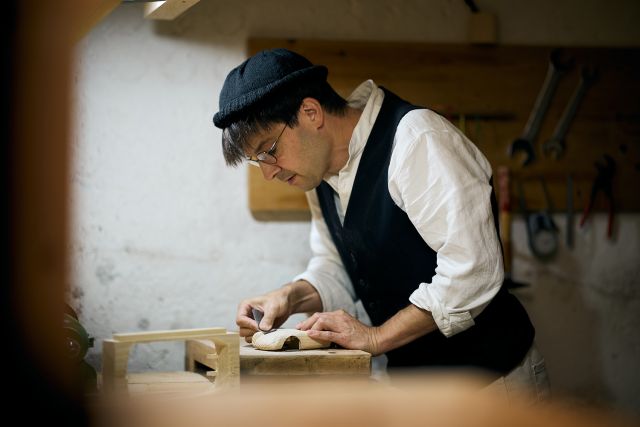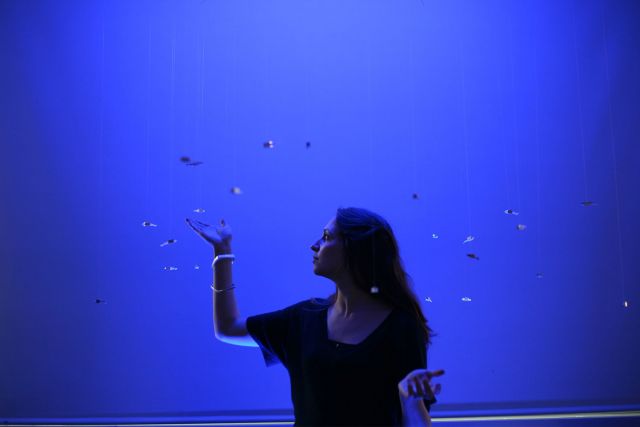Arnold used Limoges porcelain to create this almost translucent parabola-shaped vessel, reduction-fired in a gas kiln at 1330°C. Delicate porcelain thorns cover the exterior. The vessel has been left unglazed, allowing the pure natural white colour of the porcelain to shine through.
Height 24 cm
Diameter 31 cm
 ARNOLD ANNEN by L_1757587.jpg.jpeg)
 Annen BOWLS_ù 31cm H 24cm.jpg.jpeg)
 ARNOLD ANNEN by L_1757589.jpg.jpeg)
 ARNOLD ANNEN by L_1757593.jpg.jpeg)
 ARNOLD ANNEN by L_1757598.jpg.jpeg)
Arnold Annen
- Atelier K3
- Porcelain maker
- Basel, Switzerland
- Master Artisan
- Recommended by Métiers d'art Suisse
By appointment only
+41 787538485
Pushing porcelain's physical limits
- • Arnold's bowls are distinctively thin and translucent
- • Every vessel is the result of sophisticated techniques
- • His work has been described as 'white gold'
Arnold Annen is above all famous for his work in Limoges porcelain. Over the years, he has perfected his technique, which has become his unmistakable hallmark. He makes bowls as thin as paper, with a transparency that is unparalleled in the world of ceramics. To reach this level of perfection, his procedures involve a very disciplined approach, along with sophisticated manual techniques. “I work porcelain to its physical limit because I aim for both maximum lightness and translucency. The atmosphere of the light caught in the shell emerges from the variations in the relief,” he says.
Read the full interviewWorks
Photo: © All rights reserved

Photo: © All rights reserved
This parabola-shaped vessel is made from slip-cast Limoges porcelain. The slip is left in the plaster mould for about one minute, resulting in a 2mm-thick wall. The surface of the bowl is then heated with a gas burner, which causes immediate evaporation. Small, glowing porcelain shreds fly off the surface. This process is repeated, layer by layer, until the wall is perforated or almost perforated in places, giving it a wafer-like thinness and translucency.
Height 75 cm
Diameter 75 cm

Photo: © All rights reserved
Arnold has created a universe of eerily organic forms. This huge spiky sculpture was assembled from thrown porcelain parts. Cork and charcoal were added to the mixture, giving it a slightly grey tone. The form was inspired by radiolarians, microscopic living creatures with mineral skeletons.
Height 75 cm
Diameter 75 cm

Photo: © All rights reserved
This translucent bowl is made from slip-cast Limoges porcelain, reduction-fired in a gas kiln at 1330°C. The slip is left in the plaster mould for one to two minutes, resulting in a 2mm-thick wall. The parabola-shaped bowl is then worked on a potter’s wheel, where it is given its final texture. It has been left unglazed, allowing the pure natural white colour of the porcelain to shine through.
Height 24 cm
Diameter 31 cm

Photo: © All rights reserved
Arnold’s Nassellaria series is composed of amphorae-shaped sculptures with different-sized circular holes spread over the surface. The sculptures rest on their sides and have different levels of transparency. The forms are irregular, like skeletons, and create a complex system of shadows.
Height 22 cm
Diameter 33 cm
Length 22 cm














